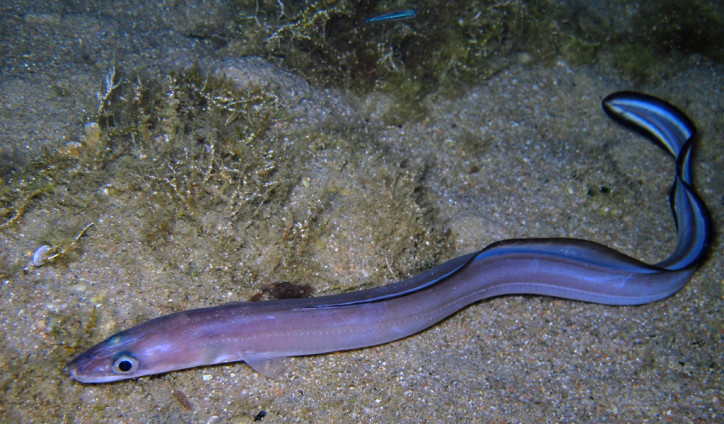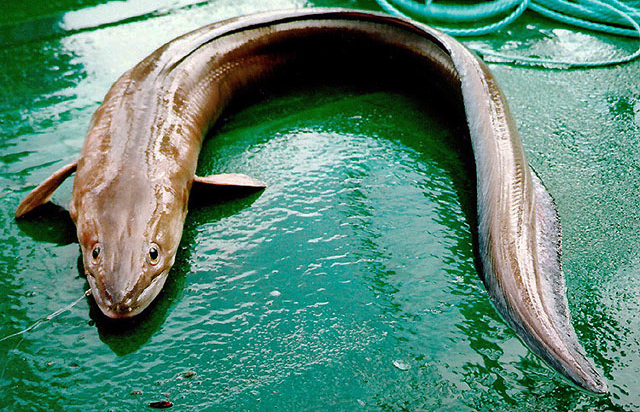Fish of the Conger genus of the Congrinae subfamily of the Congridae (conger and garden eels) family of the Congroidei suborder of the Anguilliformes (eels) order of the Elopomorpha superorder.

(European conger. Photo by © Roberto Pillon. fishbase.org)
European conger (Conger conger) was first described in 1758 by the Swedish naturalist Carl Linnaeus (1707-1778).
It occurs at the depth of 0-1,171 meters, usually up to 500 meters. It prefers to stay near the bottom. It hides in the crevices of rocks and caves during the day and hunts at night. Large specimens prefer to stay in deep water. Its maximum length is 300 centimeters. Specimens up to 150 centimeters are more common. The maximum recorded weight is 110 kilograms. It feeds on fish, crustaceans and cephalopods.

(European conger. Photo by © Pedro Niny Duarte(c)ImagDOP. fishbase.org)
It is a permanent inhabitant of the Adriatic Sea.
Names of European conger (Conger conger) in other languages are as follows:
Ngjala e egër (Albanian), Kongeraal (Dutch), Μουγγρί (Mungri) (Greek), Congrio común (Spanish), Grongo (Italian), Meeraal (German), Konger (Polish), Safio (Potuguese), Конгер (Konger) (Russian), Ugor, Gruj (Croatian, Serbian, Slovenian), Mığrı (Turkish), Congre commun (French), Úhořovec mořský (Czech).